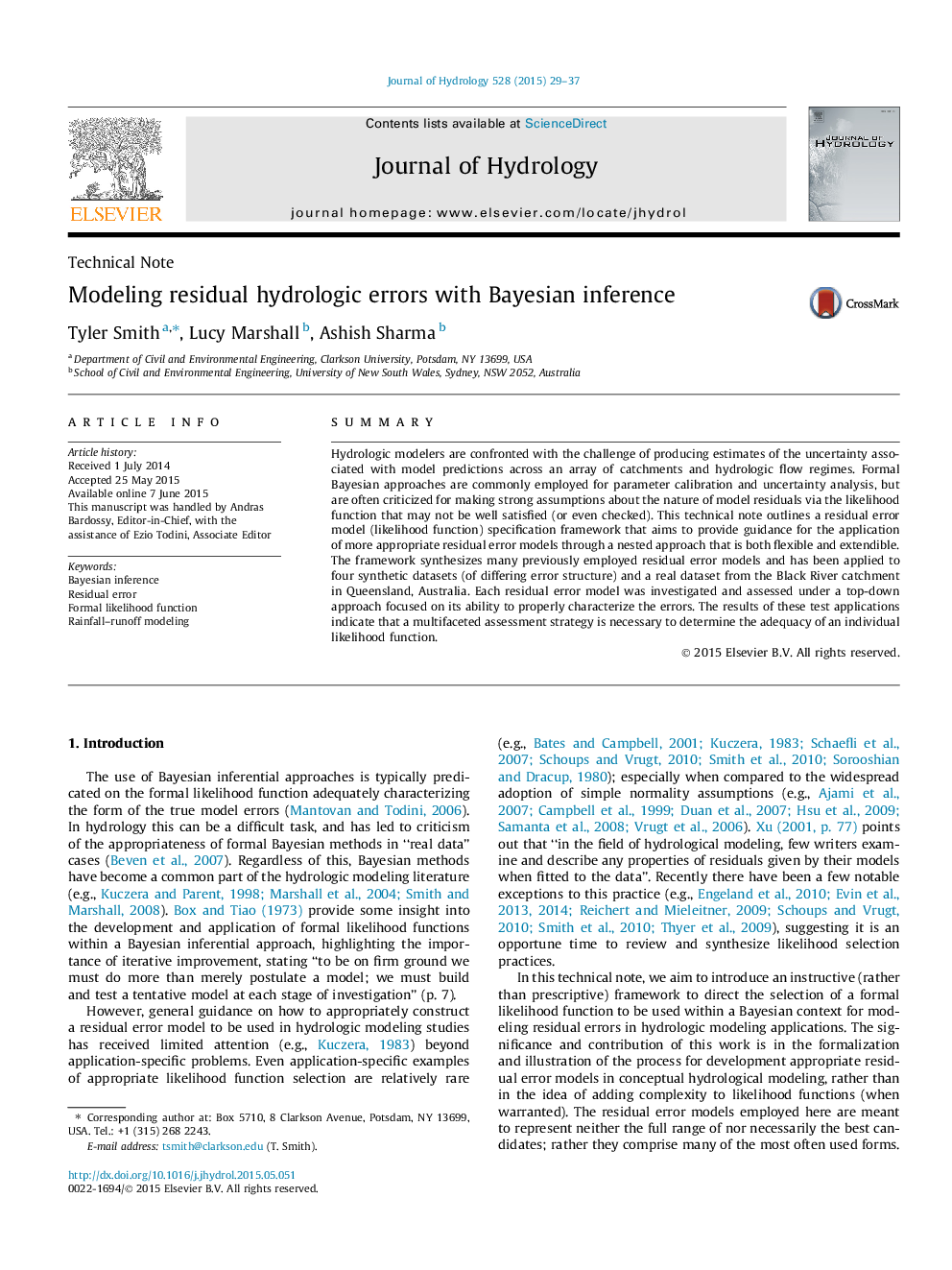| Article ID | Journal | Published Year | Pages | File Type |
|---|---|---|---|---|
| 6410871 | Journal of Hydrology | 2015 | 9 Pages |
â¢Bayesian inference requires specification of the likelihood function.â¢A methodology is introduced to address this requirement.â¢The approach utilizes instructive guidelines for improved model predictions.
SummaryHydrologic modelers are confronted with the challenge of producing estimates of the uncertainty associated with model predictions across an array of catchments and hydrologic flow regimes. Formal Bayesian approaches are commonly employed for parameter calibration and uncertainty analysis, but are often criticized for making strong assumptions about the nature of model residuals via the likelihood function that may not be well satisfied (or even checked). This technical note outlines a residual error model (likelihood function) specification framework that aims to provide guidance for the application of more appropriate residual error models through a nested approach that is both flexible and extendible. The framework synthesizes many previously employed residual error models and has been applied to four synthetic datasets (of differing error structure) and a real dataset from the Black River catchment in Queensland, Australia. Each residual error model was investigated and assessed under a top-down approach focused on its ability to properly characterize the errors. The results of these test applications indicate that a multifaceted assessment strategy is necessary to determine the adequacy of an individual likelihood function.
